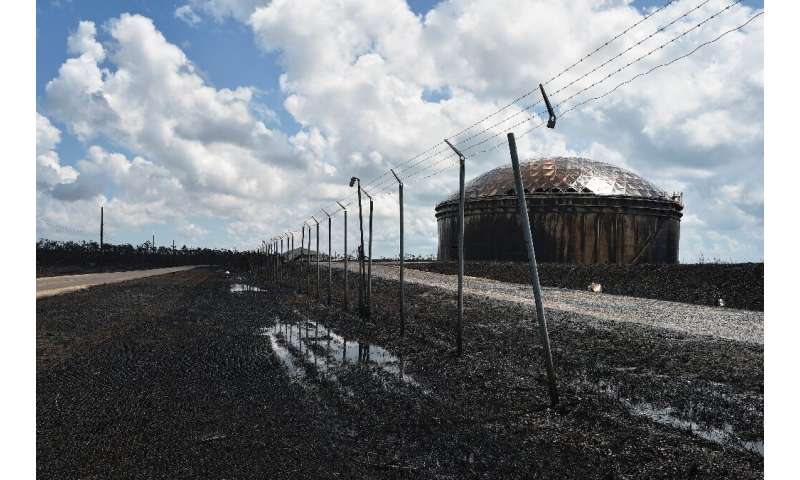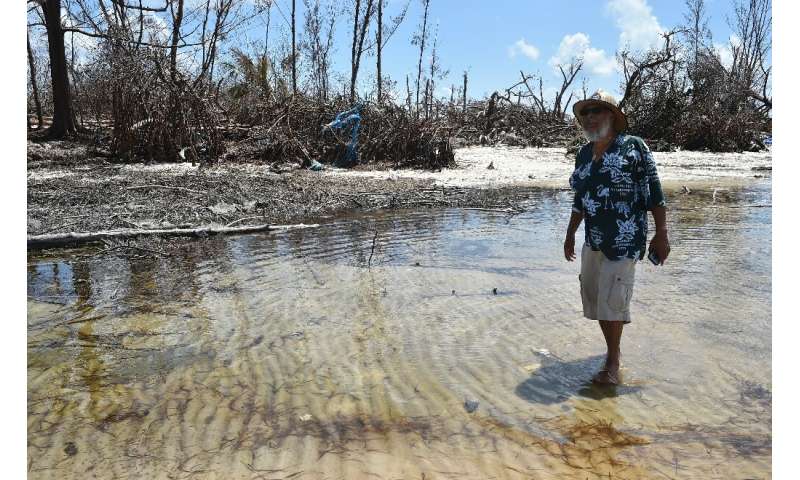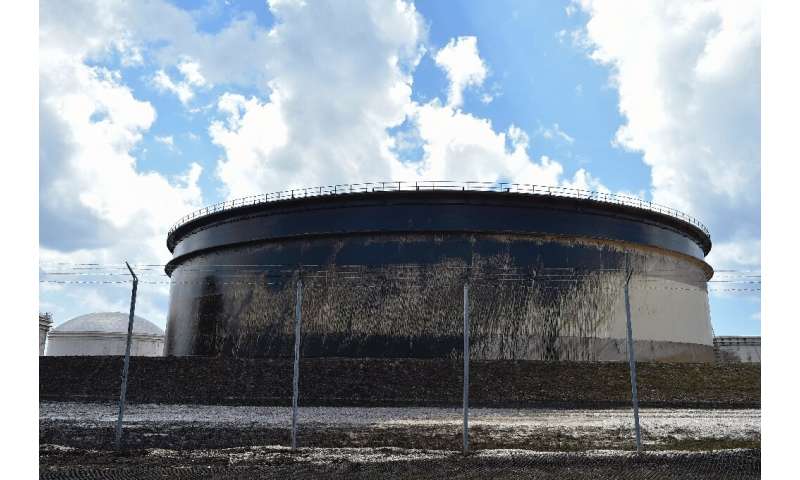Newly-formed Bahamas Mangrove Alliance announces founding at Earth Day community planting event

Bahamas Mangrove Alliance founding members kick off Earth Day community mangrove planting in East End GBI.
Pictured from left to right: Gimel Morely and Dr. Karlisa Callwood of the Perry Institute for Marine Science (PIMS), Rashema Ingraham of Waterkeepers Bahamas (WKB), Jim McDuffie and Justin Lewis of Bonefish & Tarpon Trust (BTT), WKB Youth Cadet Cordae Strachan.
Newly-formed Bahamas Mangrove Alliance announces founding at Earth Day community planting event
Three influential conservation NGOs join forces and announce a multi-year effort to protect wetland habitats and promote mangrove restoration across The Bahamas
Monday, April 24, 2023 – FREEPORT, Grand Bahama – In commemoration of Earth Day 2023, three influential conservation groups announced the founding of the “Bahamas Mangrove Alliance” (BMA), a new multi-sector coalition dedicated to protecting and restoring mangrove habitats across The Bahamas.
The Bahamas Mangrove Alliance’s three founding members are the international nonprofit Bonefish & Tarpon Trust (BTT) and local nonprofits the Perry Institute for Marine Science (PIMS) and Waterkeepers Bahamas (WKB). The newly formed and wetlands-focused coalition will focus on mangrove protection, restoration, science, prevention of loss, grassroots advocacy, and raising awareness through education. These founding groups aim to grow the BMA to include other nonprofits, national park and other fisheries managers, island communities, community leaders, sustainable businesses, and where possible to align and support Government priorities at national and international scale. They also hope to support public sector and higher education capacity building through the possibility of targeted funding, policy support, and technical assistance such as coordinated scientific research and offering relevant trainings over a several-year period.
On co-founding the BMA, Waterkeepers Executive Director and Freeport native Rashema Ingraham said: “We are very excited to be partnering with regionally recognized organisations like PIMS and BTT to broaden the reach and scope of efforts to ensure that mangrove forests throughout The Bahamas are healthy and continue to benefit the marine and coastal environment, as well as the human populations and our national Blue Economy that depend upon it to survive and thrive. As the BMA grows, we invite members of the public and other groups to join our cause!”
To celebrate and announce the founding of the BMA this Earth Day, the groups together hosted a community mangrove planting in East End Grand Bahamas this past Saturday. Day-of planting participants included local bonefish guides, international conservationists, Grand Bahama school groups, University of The Bahamas North, members of the East Grand Bahama community, media, and government officials from Forestry, Tourism, and the Ministry for Grand Bahama. The East End mangrove restoration planting targeted coastal areas hardest hit by Hurricane Dorian and compliments ongoing efforts in Abaco and elsewhere across the country. The BMA’s three founding organisations, BTT-WKB-PIMS, emphasized the need to conserve and protect this vital habitat type in islands across The Bahamas.
“Mangroves are so critical to the health of marine ecosystems across The Bahamas,” said BTT President and CEO Jim McDuffie. “They are an essential part of the shallow water environment that makes The Bahamas a premiere and economically valuable destination globally for flats fishing while also serving as nursery and spawning habitats for a majority of the country’s valuable commercial fisheries.” McDuffie continued, “As the alliance begins to welcome more local and international organisations into its membership, our immediate next steps will include close engagement with Government and partnering with other national initiatives focused on healthy mangroves in The Bahamas.”
PIMS Director of Community Conservation and Caribbean marine scientist Dr. Karlisa Callwood stated, “Joined with many other groups and alongside Government, our initial focus for mangrove restoration has been on Abaco and Grand Bahama, the islands hit hardest by Hurricane Dorian. However, wetlands and mangrove systems throughout the country need protection, as well as careful and ongoing scientific monitoring and restoration exercises such as our Earth Day planting today. PIMS is very excited to co-found the Bahamas Mangrove Alliance with BTT and Waterkeepers Bahamas as the coalition’s scientific partner.”
Mangrove habitats serve as nurseries and spawning grounds for up to 70% of the country’s ecologically important and commercially valuable marine species. Post-Dorian observations conducted by BTT and other local science partners, such as PIMS and The Bahamas National Trust, showed that Hurricane Dorian wrought widespread ecosystem destruction across huge areas of both Grand Bahama and Abaco, removing previously intact mangrove forests.
The Bahamas Mangrove Alliance for wetlands protection was inspired in part by an ongoing initiative known as the Northern Bahamas Mangrove Restoration Project, a collaboration between BTT, The Bahamas National Trust, bonefishing guides and lodges, Abaco’s Friends of the Environment, local schools, community leaders, and many other local and national stakeholders. This related restoration project involves the growing of mangroves in nurseries in Grand Bahama and Abaco for the purpose of planting in impacted areas around these islands. The newly formed BMA hopes to help coordinate this and other mangrove conservation efforts under a single umbrella to advocate for protection of critical areas while kick-starting recovery of mangroves nationwide through both community plantings and mass-scale mangrove propagule distribution in accordance with scientific best practices.
PIMS researcher and Nassauvian Gimel Morley expressed excitement for the BMA and reiterated the importance of mangroves to Bahamian communities. Amidst planting mangroves herself, Morley commented, “Healthy mangrove forests are critical to the Bahamian way of life and are integral to our cultural identity. Mangroves are necessary to support our growing Blue Economy, they restock our fisheries and they protect our coastlines, homes, and coral reefs during major weather events which will continue to increase due to climate change. We must urgently protect and restore these areas across the entire archipelago. The BMA seeks to work with Government and other national partners to do just that.”
Earth Day is an annual global celebration honoring the achievements of the environmental movement and raises awareness of the need to protect Earth’s natural resources for future generations. BTT Bahamas Initiative Manager and Grand Bahamian Justin Lewis said, “We thought this was the perfect occasion to hold a mangrove replanting, both to celebrate the impressive work being done in The Bahamas by local and international partners, Since Dorian, and including today’s event, nearly 40,000 mangroves have been planted in Abaco and Grand Bahama. In addition to ecosystem restoration, mangrove plantings are opportunities for community education about their importance that allow the public and policymakers alike to get hands-on involvement in environmental stewardship.”
Returning to the dock after a long day in the sun, WKB Cadet Cordae Strachan concluded, “Saturday was an amazing experience. We were able to play a hands-on role in restoring a vital environmental resource while learning a great deal about why mangroves are so important to our environment and our communities. I can’t wait to be a part of the Bahamas Mangrove Alliance’s work and to involve both my school friends and my family!”
Mangrove conservation in The Bahamas is generously supported by both local and international donors and foundations such as BTT’s individual supporters, the Moore Bahamas Foundation, GBI’s East End Lodge along with other bonefish guides and lodges across the country, the for-cause environmental apparel brand MANG, several major international environmental NGOs, the Global Environment Facility (GEF), Bahamian Rotary Clubs, the Bahamas Protected Area Fund (BPAF), and many others. If you or your organisation wish to get involved, please email bahamas@bonefishtarpontrust.org.





